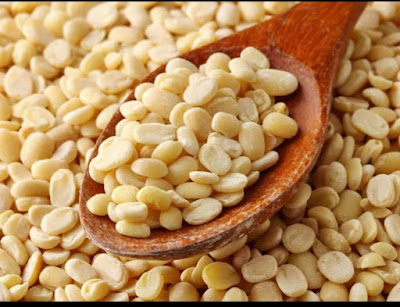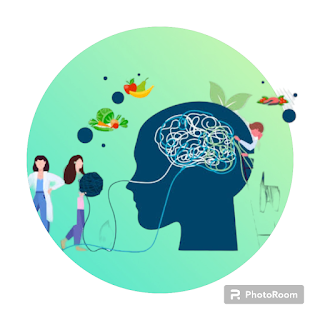**Exploring the Diversity of Daal: Types and Health Benefits
**
Daal, a staple in South Asian cuisine, holds a significant place in the culinary traditions of the region. Not only is it a versatile ingredient, but it also boasts an array of health benefits that make it a favored choice for many. From its rich protein content to its diverse flavors, daal has much to offer both in terms of taste and nutrition.
In this blog post, we'll delve into the various types of daal commonly consumed across different cultures, exploring their unique characteristics and discussing the numerous health benefits they provide.
### **1. **Lentils (Masoor Daal)**
Lentils, or masoor daal, are perhaps one of the most popular types of daal consumed worldwide. They come in various colors, including red, green, and brown, each with its own distinct flavor profile. Red lentils are commonly used in dishes like daal tadka or Indian-style lentil soup, while green and brown lentils are often used in stews and salads.
**Health Benefits:** Lentils are rich in protein, fiber, and essential nutrients like iron, folate, and magnesium. They are also low in calories and fat, making them an excellent choice for those looking to maintain a healthy weight. Additionally, lentils have been associated with various health benefits, including improved heart health, better digestion, and reduced risk of chronic diseases like diabetes and cancer.
### **2. **Chickpeas (Chana Daal)**
Chickpeas, also known as garbanzo beans, are another popular legume used in many cuisines around the world. In South Asian cuisine, they are often used to make chana daal, a flavorful dish made from split chickpeas cooked with spices and herbs.
**Health Benefits:** Chickpeas are an excellent source of plant-based protein, making them an ideal choice for vegetarians and vegans. They are also high in fiber, which can aid in digestion and help promote feelings of fullness. Additionally, chickpeas contain various vitamins and minerals, including folate, iron, and phosphorus, which are essential for overall health and well-being.
### **3. **Yellow Split Peas (Toor Daal)**
Yellow split peas, also known as toor daal or arhar daal, are commonly used in Indian cuisine to make flavorful stews and soups. They have a slightly sweet and nutty flavor, making them a versatile ingredient in many dishes.
**Health Benefits:** Yellow split peas are an excellent source of plant-based protein and fiber, which can help support muscle growth and promote satiety. They are also rich in vitamins and minerals, including folate, potassium, and manganese, which play a vital role in various bodily functions. Additionally, the high fiber content of yellow split peas may help lower cholesterol levels and improve heart health.
### **4. **Black Lentils (Urad Daal)
Black lentils, also known as urad daal or black gram, are a type of daal commonly used in Indian cuisine, particularly in dishes like daal makhani. They have a rich, earthy flavor and a creamy texture when cooked.
**Health Benefits:** Black lentils are an excellent source of protein, fiber, and essential nutrients like iron, folate, and magnesium. They are also low in fat and calories, making them a nutritious addition to a balanced diet. Additionally, black lentils contain antioxidants, which can help protect against oxidative stress and inflammation in the body.
### **5. **Moong Daal (Mung Beans)**
Moong daal, or mung beans, are small green legumes commonly used in South Asian cuisine. They are often used to make daal or sprouted and added to salads and stir-fries.
**Health Benefits:** Moong daal is rich in protein, fiber, and essential nutrients like folate, manganese, and magnesium. It is also low in calories and fat, making it an excellent choice for those looking to maintain a healthy weight. Additionally, moong daal contains antioxidants, which can help protect against chronic diseases like heart disease and cancer.
### **6. **Kidney Beans (Rajma Daal)**
Kidney beans, also known as rajma daal, are a popular legume used in many cuisines around the world. In South Asian cuisine, they are often used to make rajma, a spicy bean stew served with rice or roti.
**Health Benefits:** Kidney beans are an excellent source of plant-based protein, fiber, and essential nutrients like iron, potassium, and folate. They are also low in fat and calories, making them a nutritious addition to a balanced diet. Additionally, kidney beans contain antioxidants, which can help protect against chronic diseases like heart disease and diabetes.
### **7. **Pigeon Peas (Arhar Daal)**
Pigeon peas, also known as arhar daal or toor daal, are a type of legume commonly used in Indian cuisine. They have a mild, nutty flavor and are often used to make daal or added to soups and stews.
**Health Benefits:** Pigeon peas are rich in protein, fiber, and essential nutrients like folate, potassium, and magnesium. They are also low in fat and calories, making them a nutritious addition to a balanced diet. Additionally, pigeon peas contain antioxidants, which can help protect against chronic diseases like heart disease and cancer.
### **Conclusion**
Daal, in its various forms, is not only delicious but also incredibly nutritious. From lentils and chickpeas to split peas and mung beans, each type of daal offers its own unique set of health benefits, ranging from improved heart health to better digestion and weight management.
Incorporating daal into your diet on a regular basis can not only add flavor and variety to your meals but also provide you with essential nutrients that are vital for maintaining overall health and well-being. So, the next time you're planning your meals, consider adding some daal to the menu and reap the many benefits it has to offer.










Comments
Post a Comment